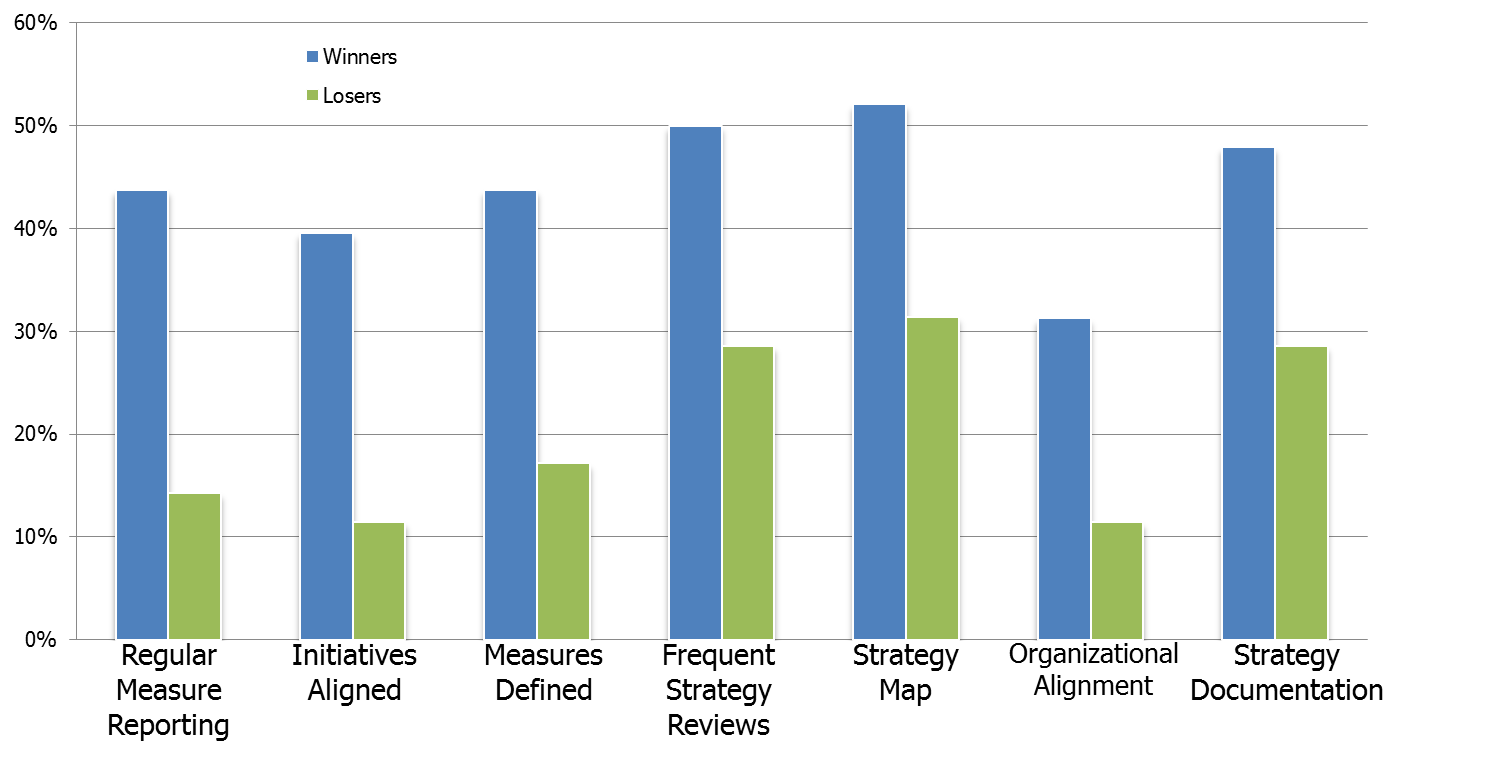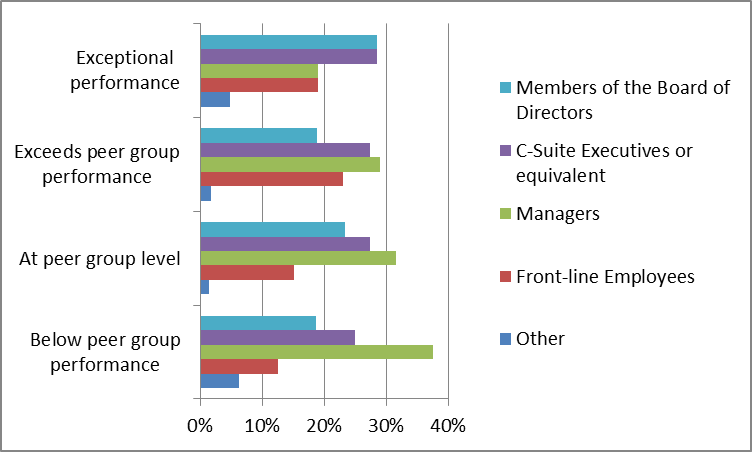
2011 Strategy Management Survey Highlights
In March 2011, Ascendant completed our first ever strategy management survey, the purpose of which was to learn about the management practices of mission-driven organizations. We asked respondents questions such as how well they thought their organizations were performing, what tools they are using to help manage their performance, and what their greatest challenges are.
We solicited survey respondents via press releases, web postings, and emails to our clients and 2011 Mission-Driven Performance Summit attendees. We received 85 responses from a broad mix of sectors including education, government, non-profits, and commercial industry. Most respondents were American based and have been in existence for over 20 years.
One of the most interesting findings of the survey indicated that 57% of survey participants said their organization is performing above the level of their peer organizations, while only 8% admitted to being below peer group performance. In addition, as the figure below illustrates, organizations that report their results are either "exceptional" or "exceed" their peers use management tools an average of 24% more frequently than those organizations that report "average" or "poor" results.

On the other hand, while most organizations say they are currently implementing a strategy management process, they still have a ways to go. Most have a strategy map or similar tool, conduct leadership strategy discussions more than once per year, and have strategy documentation either fully in place or implementation underway.
The most popular management tools currently in use include: strategic planning, mission and vision statements, benchmarking, and the Balanced Scorecard. Meanwhile, Lean Six Sigma, total quality management and supply chain management were the least popular tools, with nearly 70% saying they had no plans to use these tools.
One key finding from the survey was that exceptionally performing organizations have a higher involvement by board members and c-suite executives in the strategy process, while those who said they are performing below peer group level performance had mid-level managers most involved in the process.

It was no surprise to find that the greatest strategic challenge to mission-driven organizations is funding. This was reinforced by our finding that the biggest barrier to strategy execution is budget constraints. Other top barriers to strategy execution included time, organizational culture, and management sponsorship.
While none of these findings are groundbreaking, they should provide leaders of mission-driven organizations some comfort that they are all facing similar challenges. They also suggest that chances to get together and share ideas with peers, such as at the Mission-Driven Performance Summit, may present opportunities to help organizations improve their performance.



June 2021
| S | M | T | W | T | F | S |
|---|---|---|---|---|---|---|
| 1 | 2 | 3 | 4 | 5 | ||
| 6 | 7 | 8 | 9 | 10 | 11 | 12 |
| 13 | 14 | 15 | 16 | 17 | 18 | 19 |
| 20 | 21 | 22 | 23 | 24 | 25 | 26 |
| 27 | 28 | 29 | 30 |
Monthly Archive
June 2014 (1)
May 2014 (2)
March 2014 (1)
February 2014 (2)
January 2014 (1)
December 2013 (1)
October 2013 (2)
September 2013 (1)
July 2013 (2)
June 2013 (2)
April 2013 (1)
March 2013 (3)
February 2013 (4)
January 2013 (7)
December 2012 (4)
November 2012 (8)
October 2012 (9)
September 2012 (5)
August 2012 (6)
July 2012 (5)
June 2012 (7)
May 2012 (8)
April 2012 (5)
March 2012 (5)
February 2012 (6)
January 2012 (6)
December 2011 (7)
November 2011 (9)
October 2011 (9)
September 2011 (2)
August 2011 (8)
July 2011 (6)
June 2011 (8)
May 2011 (12)
April 2011 (5)
March 2011 (1)
February 2011 (2)
January 2011 (4)
December 2010 (6)
November 2010 (3)
October 2010 (5)
September 2010 (4)
August 2010 (3)
July 2010 (2)
June 2010 (1)
May 2010 (2)
April 2010 (1)
March 2010 (3)
January 2010 (4)
December 2009 (1)
November 2009 (1)
October 2009 (1)
September 2009 (3)
August 2009 (2)
July 2009 (3)
June 2009 (3)
May 2009 (6)
April 2009 (5)
March 2009 (3)
February 2009 (2)
January 2009 (2)
December 2008 (2)
November 2008 (2)
October 2008 (4)
September 2008 (6)
August 2008 (5)
July 2008 (4)
June 2008 (9)
May 2008 (5)
April 2008 (6)
March 2008 (8)

